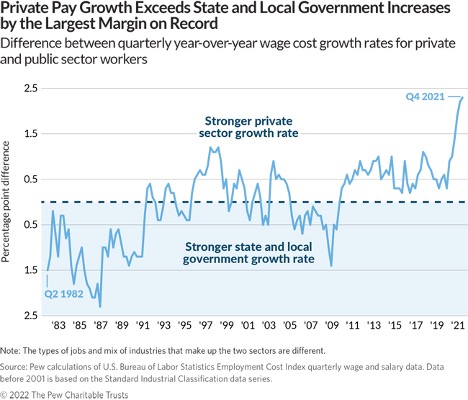This blog is the third in a series discussing retention strategies in an environment where talent is hard to find. Last month we discussed retention through accountability. How does prioritizing funding play a role in retention and overall organizational success?
Pay remains the number one issue employees cite for leaving a job (Pew). If our employees are our number one asset, our funding models should better reflect that. This is not easy with so many competing interests, needs, and commitments.
Public servants, whether in government or nonprofits, do not expect to compete with private sector wages, but the increasing gap creates significant challenges for the public sector to address current staffing shortages.
 Clarity of priorities, and investing in those priorities, can only happen with difficult
and honest conversations. If revenues do not increase, organizations must either make
significant change in how service is delivered or eliminate lower priority services.
We cannot fund mediocrity and expect exceptional work.
Clarity of priorities, and investing in those priorities, can only happen with difficult
and honest conversations. If revenues do not increase, organizations must either make
significant change in how service is delivered or eliminate lower priority services.
We cannot fund mediocrity and expect exceptional work.
The PPMC is currently going through a strategic plan for our Center. Daniel White, Vice President of Org. Development & Family Business Services at Allen, Gibbs & Houlik, L.C., has continuously challenged us to identify “what we are no longer going to do.” This certainly isn’t easy. There is no formula for success here. But these are the questions we are asking:
- Is there clarity and commitment to our organization’s priorities?
- What innovations have we implemented in revenue streams?
- What changes have we made to ensure priorities are funded?
- What do we need to let go of and no longer do?
There are so many incredible people providing public service in our communities. To keep them, we need to pay them, or we will continue to see the staffing challenges.

